|
Part III - The Atlantic Period
|
|
And so we arrive at one of the most famous periods of Coltrane's career! Believe it or not, John's contract at Atlantic was exactly the same length as his one at Prestige, 2 years. But the amount of material that he recorded for Atlantic was much, much less. This was in part because of dental problems that kept him inactive for much of 1960, part because Impulse! bought out the contract halfway through 1961, and part because after all of those blowing sessions with Prestige, Coltrane was slowing things down just a tad. The albums and sessions from here on in were a little more planned out, a little more composed, and a little more album oriented.
Still, there are a bunch of albums in this period that are posthumous releases that Coltrane had nothing to do with. Unlike their Prestige counterparts though, these bonus albums are essential listening.
v
Musically, the Atlantic period was marked by some radical shifts in approach. Not least of all, Coltrane picked up the soprano during this time (having been given it apparently by Miles Davis) and finally took it to the studio with him to record "My Favourite Things". He also settled pretty comfortably into a quartet mode, with the occasional addition of Eric Dolphy who preserved the quartet structure by not performing the same role as the trumpet player in bebop, but rather by filling out the space in the music.
Coltrane also well and truly hit "sheets of sound" territory in this era, but as extreme as Giant Steps was, this was only the beginning of his journey into extreme music, which would happen in a two-steps-forward, one-step-back manner over the next 8 years.
|
|
Bags & Trane
Recorded: January 1959
Released: 1961
Label: Atlantic
John Coltrane – tenor saxophone
Milt Jackson – vibraphone
Hank Jones – piano
Paul Chambers – bass
Connie Kay – drums
|
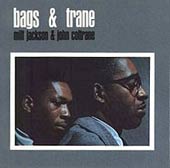
|
|
• High Tier
This album is a little unusual in that despite being recorded for Atlantic, it was actually done as part of Milt Jackson's contract rather than John's. But it was retroactively released as a collaboration album, even though Milt was the leader of the session.
This is a pretty cool session, the first one to feature vibes, and Milt Jackson is stunningly good at them. You still get the impression that they're not meshing as well together as they could, but the tunes here are great, particularly the perplexing "Be-bop". The CD version has a bunch of bonus tracks that instead of being tacked on to the end are strewn throughout the playlist, so that's a little weird. The best tracks are definitely the ones that are on the original LP though.
|
|
Giant Steps
Recorded: December 1959
Released: 1960
Label: Atlantic
John Coltrane – tenor saxophone
Tommy Flanagan – piano
Paul Chambers – bass
Art Taylor – drums
Wynton Kelly – piano ("Naima")
Jimmy Cobb – drums ("Naima")
|
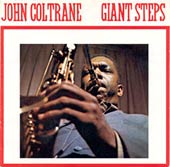
|
|
• God Tier
Finally, a quartet album that really, truly nails it. And with the same guys that had failed to nail it so many times in the Prestige era! Paul has some seriously impressive playing all over, when he's not doing a furious walking bassline he's giving perfectly delivered bottom-end to complement Tommy and John. Tommy's piano playing can't match up to Coltrane of course, but he holds his own surprisingly well, and gives a stronger harmonic comping style than what we've been hearing from him and others so far.
Coltrane himself levels up on this album. Although the title track is often cited as a game-changer is the world of jazz, I would point to "Countdown" as the track where his playing is at its most intense. I'd even call it frightening. That track is great because it's just over 2 minutes, and the majority of it is just Coltrane and Art playing their asses off, then the bass and piano come in at the end to state the head. Although 90% of this album's runtime is soloing, the tunes themselves are a big highlight of this album. "Syeeda's Song Flute" has a big place in my heart because I played it many times in my own jazz quartet. Its progression of minor chords makes it easy to solo over, but soloing like Coltrane is next to impossible. "Naima" is a particularly beautiful ballad, and benefits from the more nuanced touch of Jimmy Cobb and Wynton Kelly from the Miles Davis band.
All these tracks are Coltrane originals, and it makes you wonder why he didn't write more originals in this period. They're short, to-the-point, but fun as heck. This is a jazz album that refuses to be background music. Like Kind of Blue, also released in 1959, you can put this on and actively listen to the whole thing, talking about it with your friends as you go and pointing out the awesome flourishes and other details that you like.
|
|
Coltrane Jazz
Recorded: November 1959 to October 1960
Released: 1958
Label: Atlantic
John Coltrane – tenor saxophone
Wynton Kelly – piano
Paul Chambers – bass
Jimmy Cobb – drums
McCoy Tyner – piano ("Village Blues")
Steve Davis – bass ("Village Blues")
Elvin Jones – drums ("Village Blues")
|
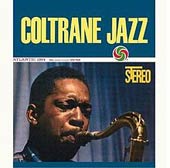
|
|
• Top Tier
This has long been one of my favourite Coltrane albums. Unlike Giant Steps, it's light on mind-melting solos, but very heavy on catchiness. It's one of the few albums in Coltrane's discography where the melodies are more important than the solos. It also has the distinction of being the first recorded appearance of the proto-classic quartet! One number, "Village Blues", Coltrane is joined by drummer Elvin Jones and pianist McCoy Tyner, who would go on to become his most well-known sideman. Bassist Steve Davis played with the three for quite a while until the group eventually settled down with a guy called Jimmy Garrision. "Village Blues" is pretty unremarkable, but you can still instantly that it's not your ordinary piano player. Elvin compliments the group with a light swing, only slightly hinting at the absolute beast he would become on the ride cymbal as the years went by.
"Harmonique" is technically impressive - John shows off his ability to hit multiphonics, but I think to the lay listener it would just sound like there's something very wrong with his sax. "Like Sonny" is perhaps my favourite ever Coltrane original, a sizzling latin riff explodes into a deep blues, similar to "Blue Rondo a la Turk" by the Dave Brubeck Quartet. The alternate versions included on the CD edition are actually better than the LP version in my opinion, the band experiments on those with how long they draw out the opening riff before switching to swing.
This album represents a golden plateau in Coltrane's career. Much like "The John Coltrane Quartet Plays", it shows a contented Coltrane that is just on the cusp of yet another leap in musical extremism.
|
|
The Avant-Garde
(co-leader with Don Cherry)
Recorded: June to July 1960
Released: 1966
Label: Atlantic
John Coltrane – tenor saxophone, soprano saxophone
Don Cherry – cornet
Charlie Haden – bass (1, 3)
Percy Heath – bass (2, 4 - 5)
Ed Blackwell – drums
|
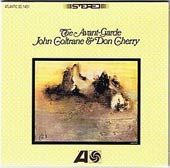
|
|
• Low Tier
This pair's attempt to recreate the magic of The Shape of Jazz to Come is entirely unsuccessful. When John is minus a piano, the only material he can play really well is tender ballads and driving blues. In this figuration he's totally lost. However, this album is still significant for one small thing… John picks up the smaller soprano saxophone and records with it for the very first time. In October, the sessions he would record using this instrument would become legendary.
|
|
Coltrane Plays the Blues
Recorded: October 1960
Released: 1962
Label: Atlantic
John Coltrane – tenor saxophone
McCoy Tyner — piano
Elvin Jones — drums
Steve Davis — bass
|
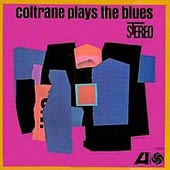
|
|
• Mid Tier
I've never been a huge fan of this album. It's a bunch of outtakes, organised by the fact that they're all blues, and you can see why they were outtakes. This feels like John is going over some simpler stuff as a warmup and to put the feelers out for how his new band does on this type of material.
This, Coltrane's Sound and My Favourite Things are all the result of a week of recording sessions in October 1960. The Blues outtakes got put on here, the more out-there outtakes went on Coltrane's Sound, and the real album is My Favourite Things. However, there is still some goodness to be found on this LP. Tyner's work on "Mr. Day" is actually pretty catchy, and the groove on "Mr. Knight" is great.
|
|
Coltrane's Sound
Recorded: October 1960
Released: 1964
Label: Atlantic
John Coltrane – tenor saxophone, soprano saxophone
McCoy Tyner — piano
Elvin Jones — drums
Steve Davis — bass
|
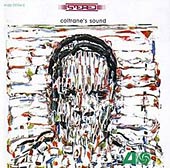
|
|
• Top Tier
The tracks that ended up on this album are hardly throwaways - these are quite incredible, and demonstrate above all why Elvin Jones' drumming is the key to Coltrane's new sound. He is absolutely propulsive, especially on "The Night Has a Thousand Eyes". Their take on "Body and Soul" is a particularly memorable one too. Tyner opens up a lot more here compared to his work on Coltrane Plays the Blues. His harmonic style becomes totally distinctive - huge chords that ring out rather than delicate plinks like the Mal Waldrons and Red Garlands of the Prestige days. Steve Davis does an admirable job holding down the bass end of the spectrum, but you still get the sense that he's the weak link.
|
|
My Favourite Things
Recorded: October 1960
Released: 1961
Label: Atlantic
John Coltrane – tenor saxophone, soprano saxophone
McCoy Tyner — piano
Elvin Jones — drums
Steve Davis — bass
|

|
|
• Top Tier
One of the most popular Coltrane albums and for good reason. One thing that sticks out here is that John actually isn't very good at playing his soprano - he's new to it and only just beginning to learn to control it. If you've ever played saxophone and then switched to the soprano you'll know what I mean. It's like it has a life of its own and if you aren't careful it will play what it wants to play. Still, his final solo on the title track is brand new ground for Coltrane, and as he played this song more and more again in live concerts, that solo would become the ultimate testament to the depths he was willing to go for in the search for spiritual enlightenment. Compare this to the one on Live in Japan six years later...
The remaining tracks are solid as well. His take on "Summertime" is memorable for being quite un-melodic even though the original most certainly is. The band swings incredibly hard but avoids falling into the usual traps and cliches of hard bop. Ladies and Gentlemen, welcome to post-bop. By sitting on modes and all soloing in their own way, this band achieves a kind of telepathy that the Miles Davis groups wouldn't achieve for a couple more years.
|
|
Olé Coltrane
Recorded: May 1961
Released: 1962
Label: Atlantic
John Coltrane – tenor saxophone, soprano saxophone
Freddie Hubbard – trumpet
Eric Dolphy – flute, alto saxophone
McCoy Tyner — piano
Art Davis — bass
Reggie Workman — bass
Elvin Jones — drums
|

|
|
• High Tier
Ole Coltrane builds on everything that the group did on My Favourite Things, but adds the very competent Freddie Hubbard to the mix, as well as Eric Dolphy, who is as usual on a different plane of existence to the rest of them, but his flute solos are incredible on the title track. He pulls out the alto on "Aisha" and gives quite a contrast to the more in-your-face Coltrane style. Dolphy plays like Cannonball Adderly, if Cannonball had taken quite a few drugs.
Reggie Workman joins Art Davis to make an unusual but effective double double bass section, especially on "Olé". I think what really stands out is that John's ability on the soprano has actually come quite a way since "My Favourite Things", and even more striking is Elvin's advancements in drumming. His beats in "Ole" sound like they're in an odd time signature but they're not at all. "Dahomey Dance" translates the same feel of "Ole" into a straight 4/4, but it's not quite as good.
|
Part 1 Part 2 Part 3 Part 4 Part 5 Part 6
|
|